Last updated: March 17, 2021
Article
Highlighting River Partnerships on the Taunton River
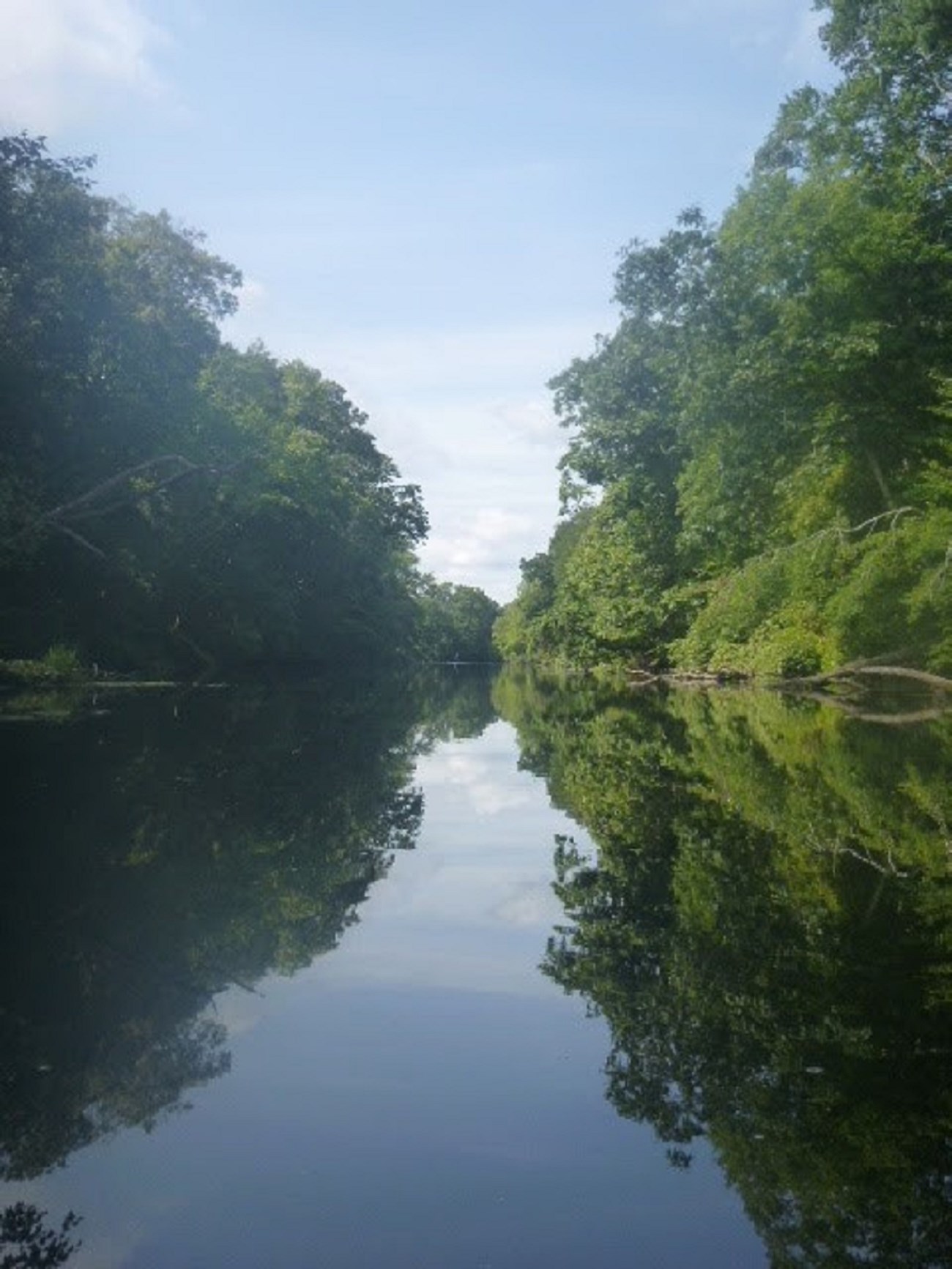
River Restoration
The Taunton River Stewardship Council (TRSC) has been working together with federal, state, and local organizations for more than a decade to improve water quality, enhance public safety, and restore aquatic habitat on the Mill River, a major tributary of the Taunton River, in Taunton, Massachusetts. To date, the Mill River Partnership project has reconnected 30 miles of intact mainstem and tributary habitat in the upper Mill River watershed to the Taunton River and Narragansett Bay by removing three dams and constructing fish and eel ladders at a fourth (which was entirely rehabilitated as part of a state bridge improvement project).
The Taunton River has the largest herring run in New England and the MA Division of Marine Fisheries has estimated that the Mill River could have an annual run of more than 100,000 fish once it becomes completely reestablished. In fact, once the first dam was removed at the Hopewell Mill/Taunton State Hospital site, herring were observed by an underwater video monitoring system set up by the Massachusetts Division of Marine Fisheries. This marked the return of herring to the Mill River for the first time in almost two-hundred years!
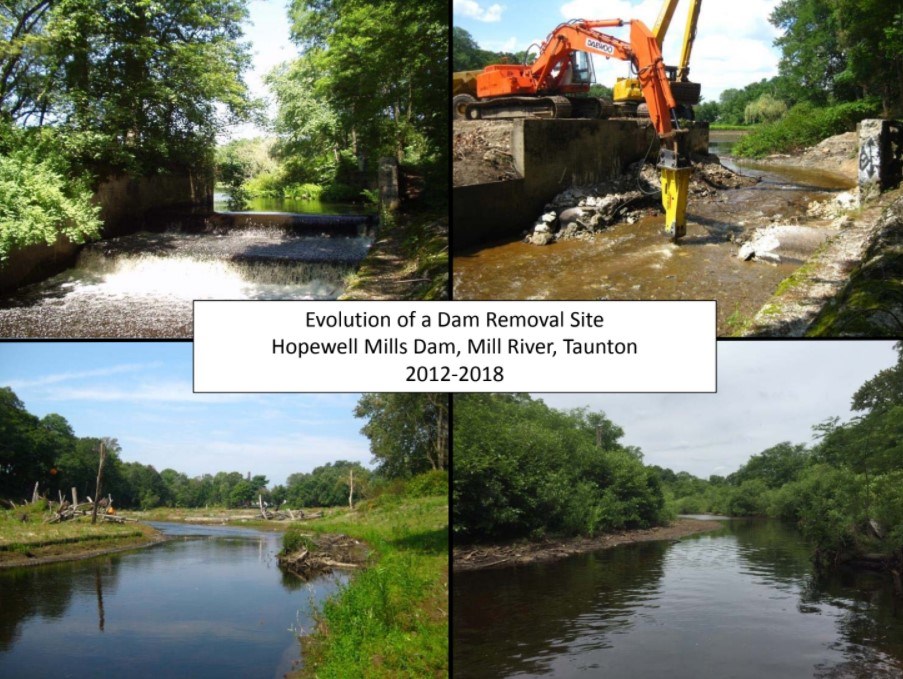
Other dam removals have been advanced in the Taunton River Watershed, including along major tributaries such as the Satucket River, Rattlesnake Brook, and the Cotley River. The Taunton River Stewardship Council is currently working with partners from The Nature Conservancy and the Town of Bridgewater, on the High Street Dam removal and restoration project on the Town River.
The Nature Conservancy has estimated that on average it is 60% less expensive to remove dams rather than repair them over a 30‐year time period. In the early 1900s, the Mill River was declared dead and unsuitable for future fisheries. Through the hard work of communities, partnerships, and the watershed alliance, the Mill River saw over 13,000 river herring return during the 2020 migration season. These dam removals don’t only offer ecological and climate resilience benefits, but also have economic benefits and address flooding and public safety.
More information about these conservation efforts may be found on mass.gov and the Nature Conservancy websites.
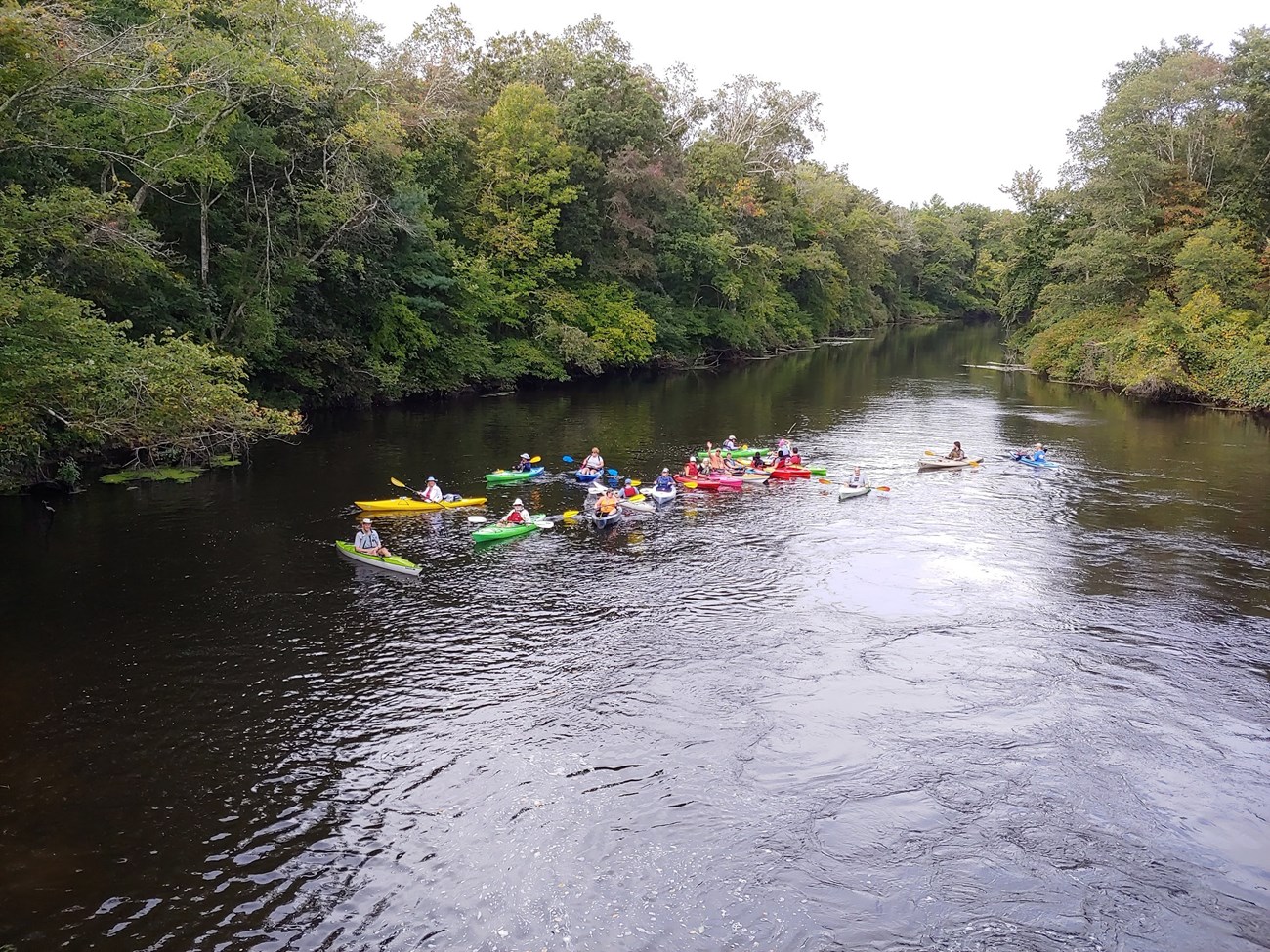
Pathways through Partnerships
The Taunton River Stewardship Council (TRSC) is dedicated to creating and maintaining connections to the Taunton Wild and Scenic River. This River and its tributaries flow into Narragansett Bay. “Protecting that estuary starts with protecting the headwaters, the feeder streams, the whole watershed,” says Steve Silva Taunton River Watershed Alliance Secretary. Bill Napolitano, Environmental Program Director of the Southeastern Regional Planning and Economic Development District (SRPEDD) believes watershed-wide protection comes from building long-lasting partnerships. “We keep people involved when we bring them to the river,” Bill commented in a recent meeting. The Stewardship Council agrees; the Stewardship Committee has led an initiative to add access sites to the Taunton River. Monica Bentley, Chair of River Access for TRSC and River Guide for the Taunton River Watershed Alliance (TRWA), is working to add access about every 4 miles through public municipal, state, or federal lands. Monica is also working with landowners to create parking where it is safe to load and unload boats. Having put in and take out areas throughout the watershed will make river trips and recreation more approachable for people with a variety of skill levels and experience.
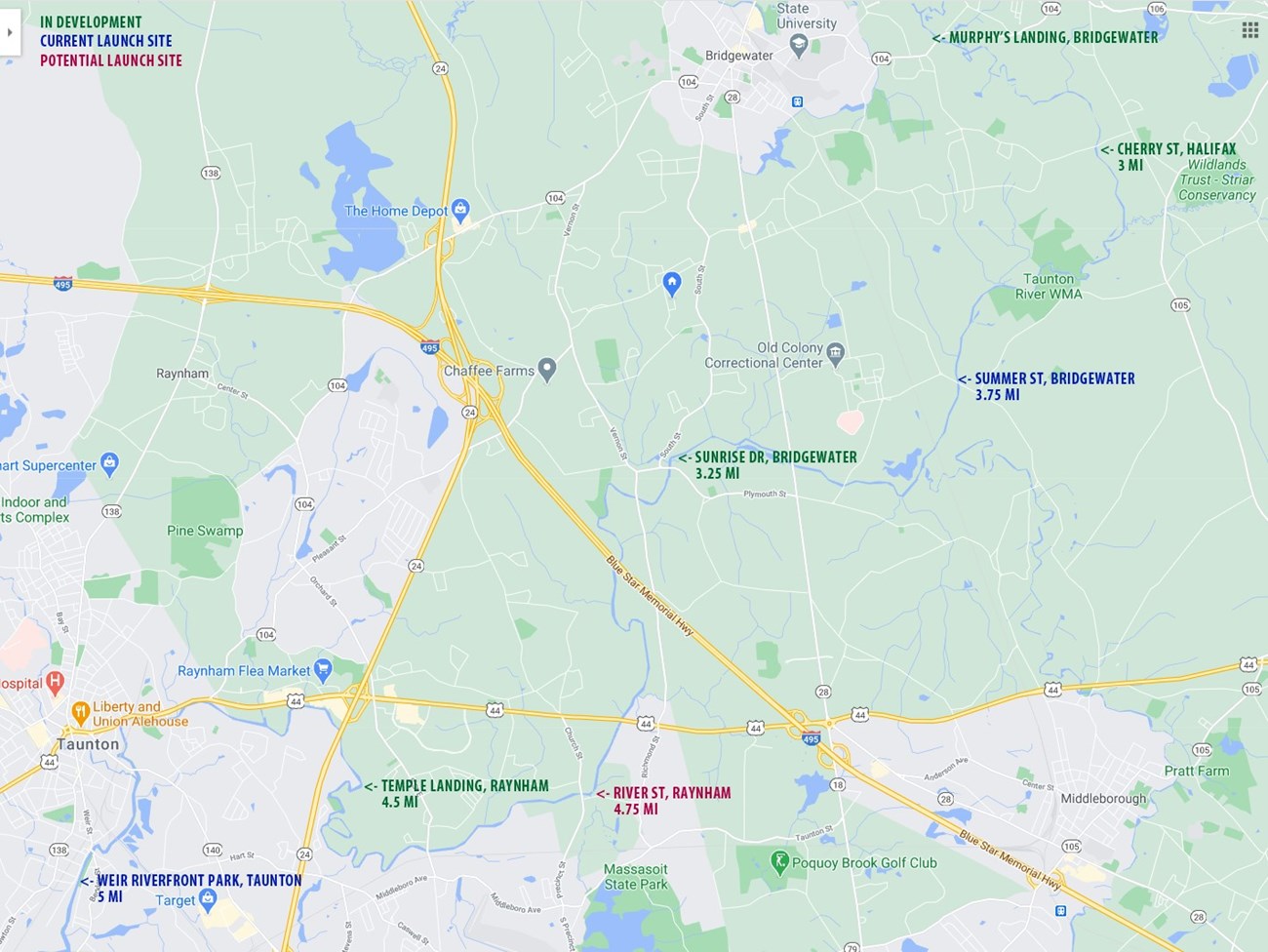
For years, partnerships have been built and strengthened by the Taunton River Stewardship Council (TRSC) to preserve land along the river corridor, leverage funding to complete management projects, increase flood capacity and storage, add signage and create links to terrestrial and aquatic recreation.
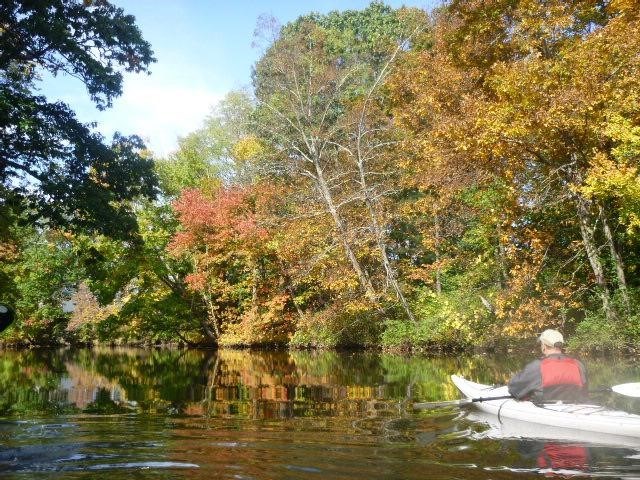
“The strength is in partnerships, we can enhance the services we can provide in the watershed by reaching out to partners and making good connections,” continues Bill. These partnerships have led to a concerted effort to create Taunton River Pathways - a vision for a network of land and water based recreation trails along the Wild and Scenic Taunton River. In 2017, a Taunton Pathways Committee was established to create the vision put forth in the City of Taunton’s Comprehensive Master Plan. The Taunton River Stewardship Council’s small grant program awarded the Taunton Pathways Committee a small grant to forward their efforts of a Taunton River Trail to connect the communities of Taunton, Dighton, and Somerset along the Taunton River. Whether folks are looking to learn about cultural or natural history, recreate by bike or boat, or take an excursion through protected lands, the Pathways project is creating opportunities for those experiences and building partnerships.
